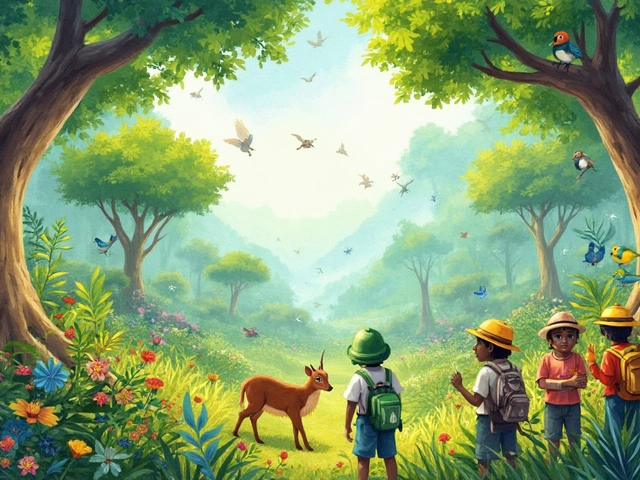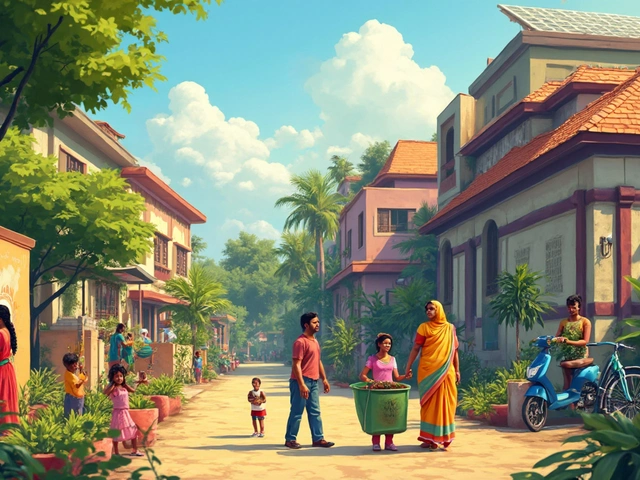Think all environmental groups are tiny bands of passionate volunteers? One organization actually dwarfs the rest. If you've seen big protests, global climate summits, or bold campaigns stopping deforestation, chances are this group's logo popped up somewhere.
We're talking about the World Wide Fund for Nature—WWF for short. With offices in over 100 countries and a logo you probably recognize—a giant panda—they aren't just famous, they're massive. If you look at numbers, WWF has a yearly budget around $320 million and millions of supporters. What makes them tick? And why do they stay at the top?
Understanding how such a large group works gives you a front-row seat to the world of environmental activism. It can even help you decide where to volunteer, donate, or just learn more. Stick around for tips on how to spot real impact and how your small action can fit into their huge machine.
- The Organization at the Top: Who Are They?
- What Makes Them So Big (and Effective)?
- How They Use Their Influence
- Easy Ways You Can Get Involved
The Organization at the Top: Who Are They?
If you ask anyone to name a biggest environmental organization, most people will mention the World Wide Fund for Nature (WWF). This group isn’t new—they started back in 1961 in Switzerland. What kicked it all off? Well, a bunch of scientists and conservationists decided the planet needed serious help, so they formed WWF to raise money for wildlife and natural areas under real threat.
Today, WWF doesn’t just protect cute animals (yes, pandas are still a mascot!). They go way bigger: elephants, tigers, oceans, forests, fresh water, even climate change policy. The group has around 6,500 full-time staff and works with over 5 million supporters. Offices in more than 100 countries keep it all running. That’s not just big—it’s global.
| WWF Quick Stats | 2024 Numbers |
|---|---|
| Countries Active | 100+ |
| Members/Supporters | 5 million+ |
| Annual Budget | $320+ million |
| Main Focus Areas | Wildlife, Forests, Oceans, Freshwater, Food, Climate |
What makes WWF stand out isn’t just money or people. They’re behind some of the world’s most famous conservation programs, like Earth Hour (yep, the global “lights off” event), restoring tiger populations, fighting plastic pollution, and helping businesses go greener. As they say on their website:
“WWF’s mission is to stop the degradation of the planet’s natural environment and to build a future in which people live in harmony with nature.”
They’ve got influence, but they’re also practical. WWF teams up with local groups, governments, companies, and anyone willing to take action. That reach is what lets them tackle both local issues (like poaching in one national park) and global ones (like climate change or plastic in oceans).
What Makes Them So Big (and Effective)?
The biggest environmental organization didn't get there by chance. WWF’s size comes straight from a mix of smart strategy, solid partnerships, and super practical programs. Unlike a lot of groups, they’re worldwide—think offices everywhere from Washington D.C. to Nairobi to Beijing. With this international reach, they can handle local projects and huge global campaigns at the same time.
They work with everyone—governments, brands, startups, even fishermen on tiny islands. WWF is well-known for teaming up with brands to reduce their environmental footprint, like working with Coca-Cola on water conservation. This broad approach brings in tons of funding, which explains why their financial muscle is hard to beat.
They're not just about cute animals. WWF tackles climate change, deforestation, food waste, and oceans—whatever needs fixing. Their campaigns go viral, especially during Earth Hour and World Wildlife Day when millions join in just by switching off their lights or sharing a post. That’s how they connect with regular people who might never think of joining an environmental group.
| WWF by the Numbers (2024) | Details |
|---|---|
| Number of countries | 100+ |
| Annual budget | $320 million |
| Volunteers | Over 5 million |
| Main focus areas | Wildlife, climate, forests, water, food |
Their science-backed projects also set them apart. WWF constantly updates their methods by working with real researchers, so their programs actually make a difference. If you ever wondered why you see so many companies with "panda-approved" labels, it’s because WWF helps set the eco-standards brands want to brag about.
The big takeaway? Being the biggest environmental organization means acting global but thinking local. WWF does both, and that’s what keeps them in the lead—and super effective at what they do.

How They Use Their Influence
The biggest environmental organization doesn’t just talk about change—they make it happen by using their reach and resources in smart ways. WWF is well-known for pushing global campaigns, talking to governments, and actually getting laws passed. For example, their work helped push the CITES agreement, which protects endangered species from illegal trade. No other group can rally world leaders, companies, and regular people quite like they do.
They aren’t just about wildlife posters. WWF has run campaigns that led massive companies like Coca-Cola and Unilever to rethink how they use water and palm oil. The group sits at the table with brands to set real, trackable goals. Want to see how big their influence is? Check out the numbers:
| WWF Project | Year | Impact |
|---|---|---|
| Earth Hour | 2007–now | 190+ countries joined in |
| Living Planet Report | Every 2 years | Spotlights species population drops |
| Global Tiger Recovery | 2010–now | Wild tiger numbers recover for first time in decades |
| CITES lobbying | 1973, ongoing | Endangered species trade bans |
Want to know their secret? Pressure and teamwork. WWF works with both politicians and companies, giving them data and spotlighting problems until leaders actually do something. Sometimes they sue governments to stop forest loss; other times, they show farmers how to raise crops without killing the rainforest.
If you hear about a country setting a protected area for tigers or a big company promising to go plastic-free, chances are, WWF nudged—or shoved—them in that direction. That’s the power of being the biggest environmental organization out there: when they speak, the world listens.
Easy Ways You Can Get Involved
If you’re itching to join the movement or just want to see where you fit in, WWF makes it pretty simple. They offer all sorts of ways for regular people—no special skills needed—to support the cause. Here’s how you can get started without moving mountains.
- Donate: Yeah, it sounds basic, but even the smallest donation supports their work in over 100 countries. The WWF website lets you choose one-time or monthly options. $10 might sound like lunch money, but when thousands chip in, it pays for big projects on the ground.
- Adopt an Animal: Probably the most fun option. You pick a species—like tigers, elephants, or polar bears—and your money helps protect their habitat. In return, you get an adoption certificate and, sometimes, a cute plush toy.
- Sign Petitions and Campaigns: A few clicks can go a long way. WWF runs online petitions on everything from rainforest protection to ocean cleanups. Adding your voice shows lawmakers people are watching.
- Green Your Routine: They offer tips and eco-hacks right on their site. Want to shrink your carbon footprint or save water at home? Simple guides show easy, small habits—like a meatless meal or using less plastic—that really add up.
- Volunteer: Local WWF offices have all sorts of volunteer jobs. You can join clean-up events, help with wildlife surveys, or work at info booths.
To give you an idea of impact, check out WWF’s numbers from last year:
| Action | People Involved |
|---|---|
| Petitions signed | 5.1 million |
| Animal adoptions | 190,000 |
| Local volunteers | over 16,000 |
It all adds up. Even if you just share a campaign on your social accounts, that’s spreading the word for the world’s biggest environmental organization. It’s about strength in numbers, and you’re totally invited.







